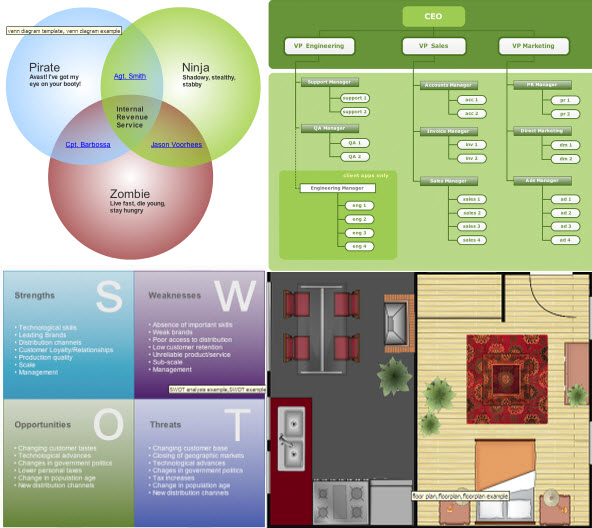What Is P2P?
P2P stands for Peer-to-Peer which means the sharing of files between two or more users on the Internet. The concept behind P2P networking is powered by a peer-to-peer application such as Gnutella, KaZaA, Napster, iMesh, LimeWire, Morpheus, SwapNut, WinMX, AudioGalaxy, Blubster, eDonkey and BearShare. The P2P application takes a piece of allotted data or sometimes whole directories from your hard drive and allows other users to freely download this content, and vice versa. Content downloaded via P2P applications can be potentially laced with a computer virus or be legally protected copyright data. P2P programs are most often used to share music and videos over the Internet. Although sharing, by passing around a CD or DVD is not illegal; sharing by creating multiple copies of a copyrighted work is illegal.
How P2P Works
Much of the P2P activity is automatic and its use is unmonitored. Computers running this software will be busy exchanging files whenever the machine is turned on. Some of the P2P programs themselves contain “spyware” that allows the author of the program, and other network users, to see what you’re doing, where you’re going on the Internet, and even use your computer’s resources without your knowledge. Once installed, these applications are hard to remove. In some cases a user has to know which files to remove, which registry entries to edit, and which configuration files need modification. Since the computers running the P2P programs are usually connected to a network, they can be used to spread malware, share private documents, or use your file server for store-and-forward where data transmitted from one device to another passes through a message center which is used by the message service to store the transmitted message only until the receiving device can be located and then forwards the data transmitted to the intended recipient. Various types of illegal files can be downloaded and re-shared over these P2P networks by mistake. This includes child pornography, which can bring the owner of the computer and network under severe criminal penalties.
Risks from P2P Programs
Some P2P programs will share everything on your computer with anyone by default. Searches done so far revealed patent applications, medical information, financial and other personal and corporate information. Viruses, Worms and Trojans are being distributed at a fast rate.
Cybercriminals these days are using a modified version of the Zeusbot/SpyEye malware, which is using a peer-to-peer network, rather than a simple bot to command-and-control (C&C) server system, making the botnet much harder to take down. Also, P2P network enables the botnet to stay alive and gather information, even if portions of the network are shut down making it even more dangerous to use P2P software.
ZeuS is very popular in the cybercriminal world because it’s capable of stealing a wide variety of information, documents and login credentials from infected systems. Both ZeuS and SpyEye can be best described as cybercrime toolkits that are used for the creation of customized banking Trojans. The code base of the two former rivals was merged last year that led to the creation of strains designed to target mobile banking customers. Basically, if the control messages are handled by P2P networks, it is almost impossible to track the criminals behind it.
Consequences of Copyright Infringement
Downloading and sharing files which contain copyrighted material is against the law. The responsibility to restrict sharing and monitor the legality of your downloads lies solely with you. This is what can happen to you:
- Disciplinary action. Your name may be forwarded to the Dean of Students Office for disciplinary action. Sanctions include fines, termination of university network access and/o university probation.
- Legal consequences. Copyright holders may offer a legal settlement option (a.k.a. Early Settlement Letter) or pursue legal action against you.
- Financial implications. If a copyright holder chooses to pursue legal action, the minimum damage for sharing copyrighted material is $750 per file (in addition to legal and court fees). Some students who settled their cases outside of court were forced to pay substantial amounts. There is no way to predict how much you may be required to pay in settlement costs.
The Federal statute, titles 17 and 18 of the U.S. Code, provide criminal penalties for infringing on copyrighted material. In the worst case infringements can be punishable by up to five years in prison and $250,000 in fines. Repeat offenders can be imprisoned for up to 10 years. Violators can also be held civilly liable for actual damages, lost profits, or statutory damages up to $150,000 per infringement, as attorney’s fees and costs.
The Digital Millennium Copyright Act (DMCA) makes it a crime to create software that helps distribute copyrighted materials. It also limits an Internet Service Provider’s (ISP) liability if the ISP notifies the alleged infringer and suspends access to illegal copies of copyrighted materials. As an ISP, Loyola is required to comply with the DMCA.
What to Do About P2P
- 1) Remove any copies that are running on any computers. This may take some time, and require some professional assistance.
- 2) Do not allow P2P software Internet access. This may mean: Disable NAT – Network Address Translation; Block access to/from the common P2P ports; Use a packet-reassembly firewall that can examine streams of data in-context for possible P2P misuse.
- 3) Delete any files on any machines which may have been obtained over a P2P network.
Legal Alternatives for Downloading
Some of the sites listed here, provide some or all content at no charge. They are funded by advertising or represent artists who want their material distributed for free. This list is not exhaustive of all content that is legally available. However, it will give you some legal options.
Movies: Watch movies online legally. Many of them are free->> Hulu Movies, Joost Movies, Amazon Video on Demand, Netflix, CinemaNow, Walmart Movies, BlockBuster
TV Shows: Watch TV shows online legally. Many of them are free->> Hulu TV, Joost TV, Clicker TV, Netflix TV, Walmart TV, iTunes TV
Music: Listen to music online legally. Many of them are free->> Pandora, Slacker, iLike, Music Rebellion, Last.fm, Blip.fm, Napster, Rhapsody, Yahoo Music Unlimited, iTunes Music, eMusic, AmieStreet, Mindawn, Zune
Others: ESPN3, GameFly, GameTap, Steam
For more legal websites click here
Students can also watch new movies on-demand while on campus: http://watchnow.reslife.com/loyolachicago/SDC/Content/Browse.aspx




















